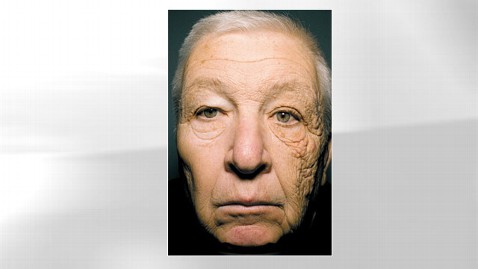
William (Bill) Edward McElligott is two different ages, 66 and 86 years old.
If you look at McElligott from the right, he looks like any 66-year-old would expect to, but from the left, wrinkles and sagging skin place him far beyond his years. He is a living demonstration of the importance of protecting your skin from the sun.
“It would take me an hour to drive to work and an hour to come home,” McElligott said. “It was a semi route, I’d have six to eight stops. … 6 a.m. to 3 p.m. on the road.”
For almost 30 years, McElligott drove a truck during prime sun hours throughout the city of Chicago delivering milk to stores and gas stations.
“My left arm was always more tan than my right, because a lot of the time I had the window open (since) we didn’t have A.C.,” McElligott said.
The 66-year-old truck driver suffers from unilateral dermatoheliosis or photo-aging, which was caused by repeated, long-term exposure to UVA rays of the sun.
It was 15 years before he noticed any difference between the two sides of his face, but McElligott ignored it, that is until his grandchildren’s questions got the best of him.
“Only reason I went in, the kids were asking me what these bumps are and it’s hard to explain to little kids, so I went to see if I could have those bumps removed,” he said.
Dr. Jennifer Gordon a dermatology resident at UT Southwestern saw McElligott while on a rotation at Northwestern in Chicago and submitted his case study, which was featured in the April edition of the New England Journal of Medicine.
“It was very stark,” Gordon said. “We are used to seeing photo damage, photo aging every day, (but) for it to be so one sided? We were taken aback.”
Gordon explained that since McElligott spent so much time in his car, his left side was exposed to UVA rays that can penetrate glass and cause the majority of photo-aging, unlike UVB rays, which cause sunburns.
“We think its because it (UVA) can penetrate more deeply into the skin than UVB and affect your collagen and elasticity,” she said. “When you destroy those that’s what gives you the aging appearance that we see.”
Dr. Mitchell Chasin, a dermatologist who did not treat McElligott, says it is extremely common to see patients that come in with more damage to their left side than their right.
“Most people are completely unaware and most people who come in to have sun damage treated, they often times will point to their left side saying they see more spots, more wrinkles, more aging, but never put two and two together,” said Chasin, the medical director of Reflections Center for Skin and Body in Livingston, N.J.
Chasin says that whenever people are outdoors, even when covered from the sun directly or on a cloudy day, they should be aware they are not safe from the reflected rays of the sun and should wear sunscreen.
“Sun block is the answer, really, for someone 365 days a year, whether it’s cloudy whether it’s sunny, whether someone is outdoors, in the car, or at the beach,” Chasin said. “If someone wants to age as best they can, sun protection is a daily regimen no matter what you are doing. Put sun block on before you leave the house.”
With summer approaching and vacations and road trips, it’s important to make sure your sunblock has protection against both UVA and UVB rays.
Last year the FDA demanded sunscreen manufacturers update their labels to offer protection for both UVA and UVB, as well as to stop the use of misleading claims such as waterproof. The agency recently extended the deadline to December for manufacturers to comply.
For McElligott sunscreen with UVA and UVB protection has become a daily fixture.
“When I’m out in the sun, when I’m going to be driving, I have sunscreen on,” he said. “I always carry it with me.” He also hopes to get the left side of his face fixed within the next month.
Gordon, although no longer treating McElligott, recommended a resurfacing laser to correct the advanced aging, a technique that can reduce facial wrinkles and scars by removing the damaged skin through a targeted beam of light, according to the American Society of Plastic Surgeons.
And for McElligott to have both sides of his face represent his age would make him “very happy.”
“That way my grandkids will quit asking me, ‘what are these bumps, grandpa?’” he said.
